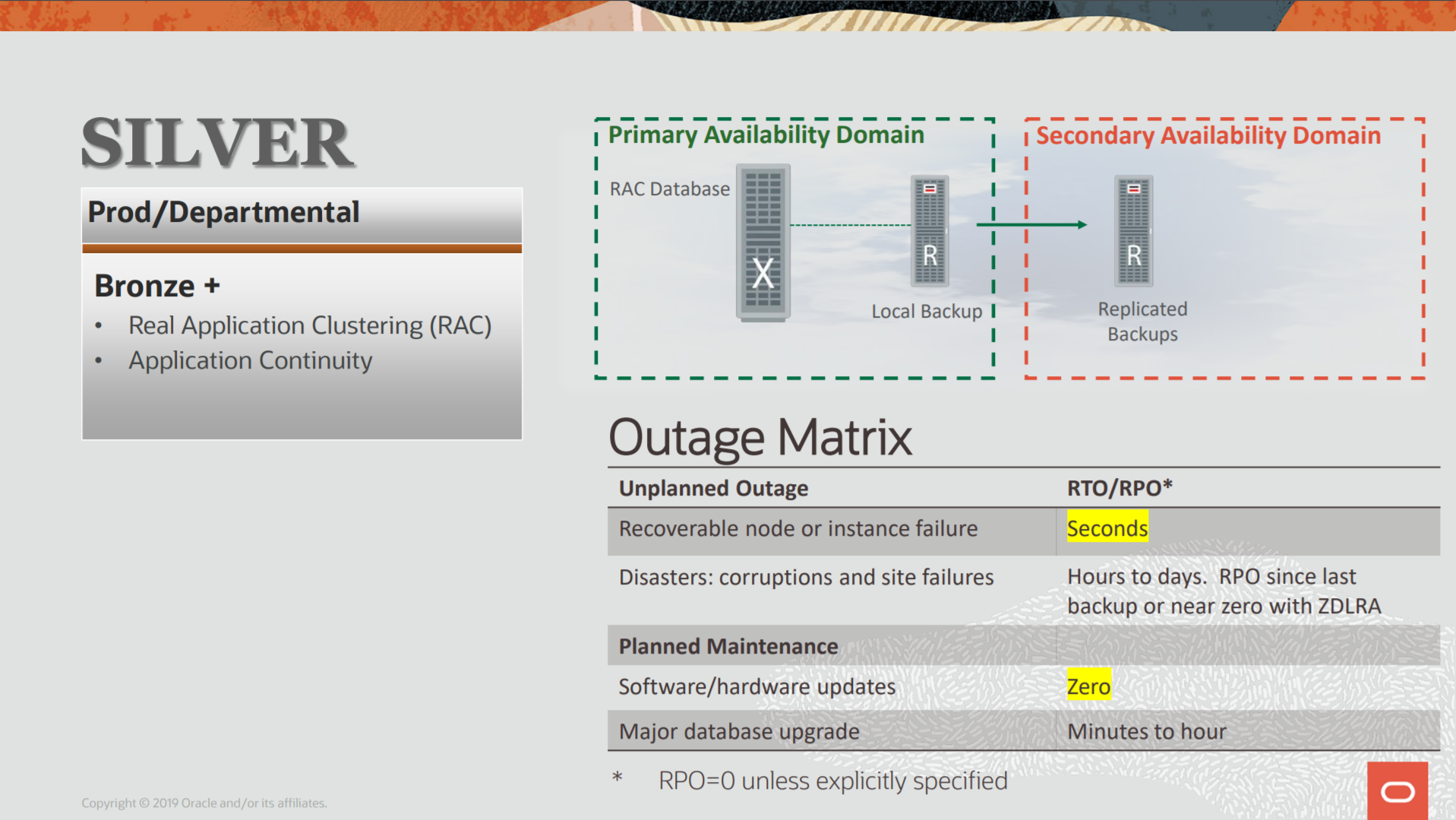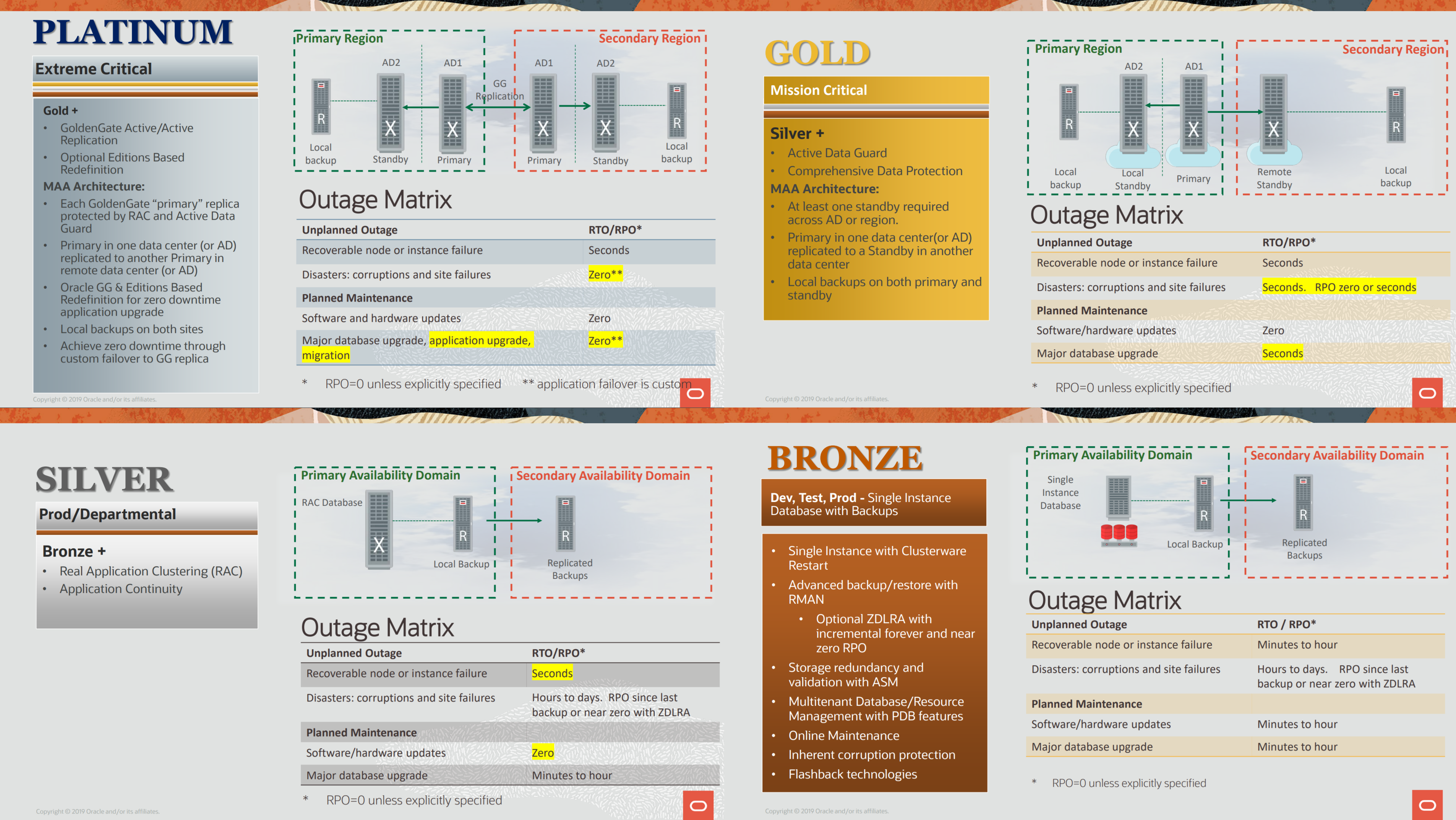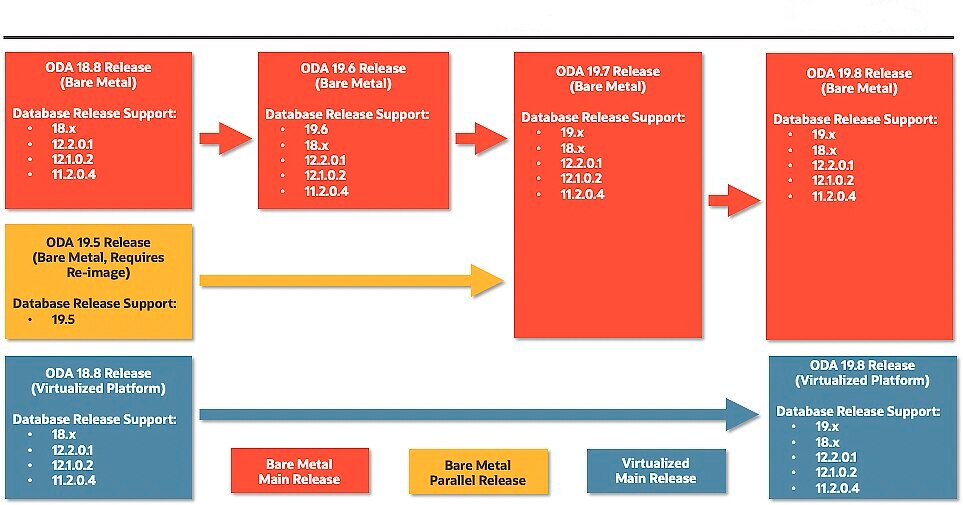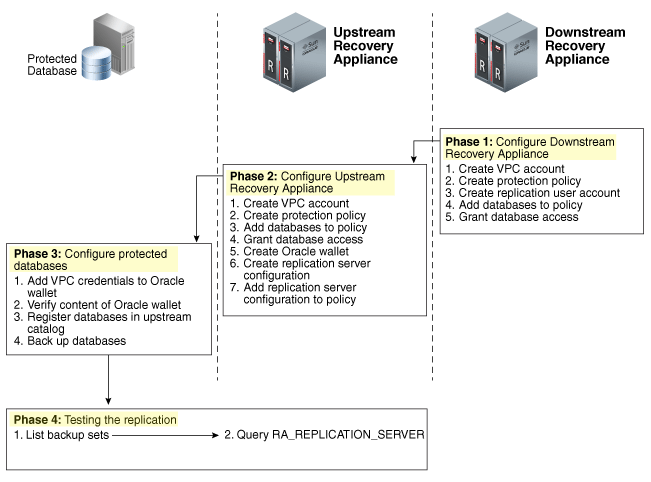The MAA defined Silver architecture for database environments that use (or need) high availability to survive for outages. The idea is having more than one single instance running, and to do that, it relies on Oracle Clusterware and Engineered Systems to mitigate the single point of failure. But is not just a database that gains with this, the Silver architecture is the first step to have application continuity. And again, ZDLRA is there since the beginning.
 As you can see above, the Silver by MAA blueprints improves compared with Bronze architecture that I spoke at the last post. But the basic points are there: RPO and RTO. They continue to base rule here. And the goals are the same: Data Availability, Data Protection, Performance (no impact), Cost (lower cost), and Risk (reduce). More technical details here at the MAA Overview doc.
As you can see above, the Silver by MAA blueprints improves compared with Bronze architecture that I spoke at the last post. But the basic points are there: RPO and RTO. They continue to base rule here. And the goals are the same: Data Availability, Data Protection, Performance (no impact), Cost (lower cost), and Risk (reduce). More technical details here at the MAA Overview doc.


